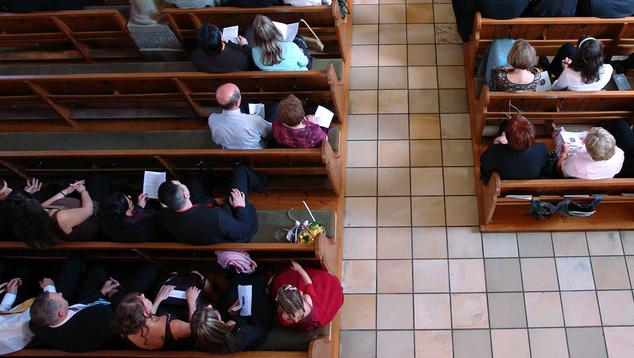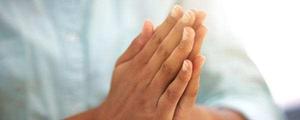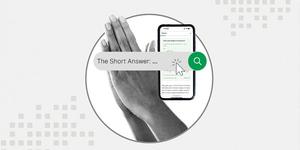I have reported on trends in the percentage of Americans who have no formal religious identity at several points over the past few years. Coming back to the phenomenon again as 2022 comes to a close, we see the continuation of an interesting development in Gallup's data. The percentage of the population who are religious “nones” has remained roughly the same now for six years.
The long-term trends on this measure are straightforward. The percentage of nones measured in Gallup surveys has risen from close to zero in the 1950s to about one-fifth of the U.S. adult population today.
But over the past six years (2017-2022), the rise of the nones has stabilized. An average of 20% or 21% of Americans in Gallup surveys in each of these years say they don’t have a formal religious identity. We are not seeing the yearly increases that occurred in previous decades.
The topic of what’s happening to religious nones generates significant interest, and not just to pollsters like myself. Journalists frequently use it as a key religious indicator in their reporting. And there are hundreds of scholarly articles, academic reviews and books examining the phenomenon of religious identity. Most of these operate on the assumption that the percentage of nones is continually rising -- part of a general trend toward secularization in U.S. society. Our trend on religious identity suggests some caution in assuming that these trends are inexorable.
This isn’t the first plateau in Gallup’s history of asking Americans about their religious identity. Few Americans were nones in the 1950s, when Gallup began routinely asking the religious identity question. That percentage rose to just under 10% by the 1980s and basically stabilized over the next couple of decades. Then we saw fairly steady increases in the 2000s until 2017, when -- as noted -- the trend has stabilized once again. (These numbers are based on yearly aggregates of all Gallup surveys in which the religious identity question was asked.)
All survey researchers I’m familiar with agree that the percentage of nones has increased over the decades. But there are differences -- sometimes significant ones -- in the precise estimate of how many nones there are and in the precise nature of the changes over time. This variance reflects differences in survey methods and question wording across survey organizations.
A little background on Gallup’s history of asking about religious identity. Gallup’s original question, first asked in the late 1940s, was quite straightforward: “What is your religious preference -- is it Protestant, Roman Catholic or Jewish?” Gallup from time to time has expanded the list of religions provided in the question. Beginning in the early 2000s, we made the option of being a none a little more explicit. We added the phrase “if any” (“What, if any, is your religious preference ... ?”). In 2005, we settled on adding “or no religion” at the end of the question, and later added Mormon and Muslim to the list of religions included in the question. The exact Gallup wording used since 2013: “What is your religious preference -- are you Protestant, Roman Catholic, Mormon, Jewish, Muslim, another religion or no religion?”
It’s not likely, in my opinion, that these changes per se had major effects on the responses.
So, we can establish two points. First, there has been an increase since the 1950s in the percentage of Americans who, when asked, say they have no formal religious identity. Second, that trend in Gallup data appears to have stabilized since 2017.
There are other measures of religiosity, and they don’t all show the same patterns. For that matter, they aren’t all measuring the same underlying dimension of religion. Those with no religious identity can still be religious, as measured by their responses to other questions. And those who identify with a religion can be quite irreligious, based on their responses to those same questions.
Each measure of religiosity provides its own unique insights into the way religion is manifested in the U.S. The self-reported importance of religion is, for example, one of our best measures of religiosity. And it, like the trend for religious nones, has shown a decline in religiosity among Americans over time. But, as is also the case with identity, religious importance has been fairly stable over the past several years.
Another measure of religiosity involves membership in a church, synagogue, mosque or temple. Trends show such membership has declined over the years. This may reflect the fact that Americans are less interested these days in official “membership,” even if they remain religious. Self-reported church attendance, another key measure of religiosity, has declined as well. But church attendance has been severely disrupted by the pandemic, making recent trends more difficult to assess.
Self-reported religious identity is in many ways a unique measure. It isn’t a question asking individuals to reflect on their religious behavior or religious attitudes. It asks an individual to attach a label to themselves, thus tapping into the individual’s desired presentation of self. And this self-labeling can be affected by many factors. One of these is the social and cultural environment in which the individual is operating. As Prof. Steven Ramey of the University of Alabama puts it, “The way a person identifies, whether to their family, friends, clients, colleagues or a survey, does not necessarily reflect their overall attitude towards practice, belief or religion.”
This leads to what I think is a reasonable hypothesis that helps us understand our trend measures. It is more culturally acceptable now to state publicly that one does not have a religious identity than it was decades ago. The rise of the nones, arguably, measures cultural shifts as well as it does a person’s underlying relationship to religion. An individual may be more willing to tell an interviewer they have no religion than they were several decades ago -- because the normative culture has changed, not their internal religion. And the leveling off of the percentage of Americans who are nones suggests that these cultural shifts may have slowed down in recent years -- or that the previous suppression of willingness to say one has no religious identity has been reduced to a more stable, lower level.
As noted, there were virtually no nones in the 1950s when Gallup began asking the question. Religious identity at that point was more like an ascribed characteristic -- something immutable like race or ethnic identity. In recent decades, religious identity appears to have become a more fluid, achieved characteristic -- moving from a rigid identity to an individual choice variable.
Of course, there is more to it than this, reflected in the continuing and complex scholarly and theological debates on religious identity and what it means. But shifting norms governing public self-expression are clearly part of the complex puzzle of religious identity (as they are, to name another example, in the increased willingness to self-label as LGBTQ+, at a time, in the words of my colleague Jeff Jones, “ … when Americans increasingly accept gays, lesbians and transgender people, and LGBT individuals enjoy increasing legal protection against discrimination”).
With all of this attention, we still don’t know what will happen to religious identity in the future. History tells us that the only constant when it comes to American religion is change. Thus, when or if the “rise of the nones” will pick back up again are unknowns. One major consideration is age. As I reviewed in my 2019 analysis, a significant question revolves around the probability that the young people of today and tomorrow will continue to become more religious as they age. But regardless of what happens in the future, one key takeaway from Gallup data, I believe, is evidence that a steady, year-by-year increase in the percentage of Americans who have no religious identity is certainly not inevitable.




